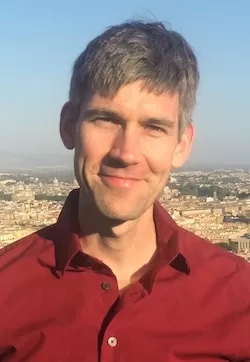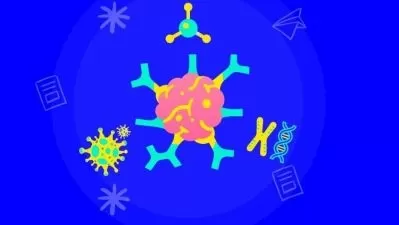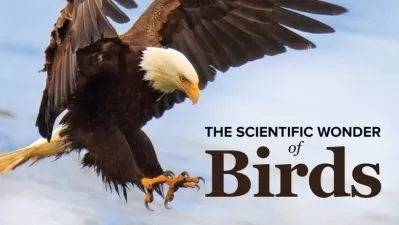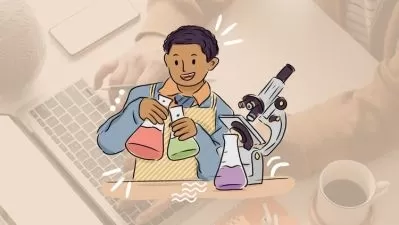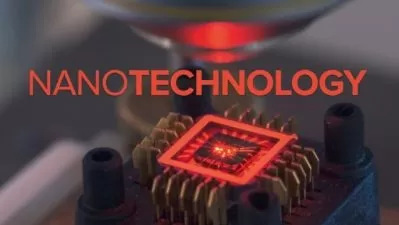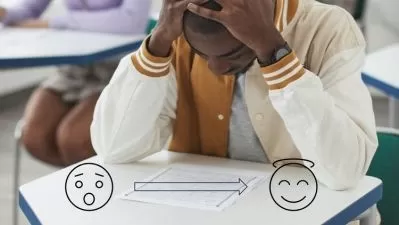Unlocking the Hidden History of DNA
Sam Kean Author
6:28:08
Description
Locked inside the DNA of every species that ever lived are endless stories—about origins, ancestors, fate, and much more. Until recently, these secrets were completely inaccessible. But with the help of new technologies, scientists are now reading the hidden history of DNA, making remarkable discoveries about our past.
DNA not only holds secrets about our ancestors and our development over time, but it also sheds light on the present workings of the trillions of cells inside our bodies. Plus, it provides clues to the future, both the possible traits of our progeny and also our likelihood of developing certain diseases.
Your gateway to this treasure trove of information is Unlocking the Hidden History of DNA, 12 informative and accessible lessons delivered by New York Times best-selling author Sam Kean, whose cogent explanations of scientific phenomena have been praised by everyone from NPR and The Boston Globe to Discover and Enterntainment Weekly.
Over the course of these lessons, you will learn astonishing truths about human genetics and development, such as:
- Our Neanderthal Kin: Long thought to be extinct, Neanderthals live on inside many of us. A few percent of the DNA in Europeans, Asians, and other non-African groups is Neanderthal in origin, showing that at some point Neanderthals must have mated with modern humans.
- The Reproductive Revolution: The placenta common to most mammals, including humans, shares features with the genetic material in retroviruses. This suggests that millions of years ago infected embryonic cells changed the way that early mammals produced their offspring.
- The Origin of Clothing: By comparing the DNA of different species of lice, scientists have determined that human body lice, which live exclusively in clothing, evolved about 170,000 years ago, likely because humans had started covering their bodies with animal skins.
The Drama behind Great Discoveries
Assuming no prior background in science, these detailed but delightful lectures cover the fundamental properties of DNA, the techniques that have unraveled its mysteries, and the very human stories of the scientists who have pioneered the field, often winning Nobel Prizes and frequently sparking controversy.
It all started in the mid-19th century with a pair of discoveries that would not be united for almost a century. Austrian monk Gregor Mendel, working with pea plants, discovered that inheritance is governed by basic rules controlled by discrete units that came to be called genes. Meanwhile, Swiss biochemist Friedrich Miescher, studying the nuclei of cells, discovered a sticky substance later called deoxyribonucleic acid or DNA. Eventually, investigators suspected that genes were located on structures known as chromosomes that are visible in cell nuclei. Some speculated that genes might have something to do with Miescher's obscure molecule, after it was found in chromosomes and as the true size of DNA finally began to be understood.
From the mid-20th century, research moved at an accelerating pace, as you learn through a series of vignettes, including:
- Biology with a Blender: With the goal of identifying the genetic material once and for all, Alfred Hershey and Martha Chase ran a startling experiment involving viruses, radioactive tracer elements, and a kitchen blender. Their 1952 results proved that DNA is beyond doubt the agent of heredity.
- Deciphering DNA’s Structure: The most famous race in the history of science pitted prominent researchers such as Linus Pauling, Rosalind Franklin, and Maurice Wilkins against a novice team composed of James Watson and Francis Crick. The goal: identify the structure of DNA and the secret of its genetic function.
- Mapping the Genome: After many breakthroughs, the big prize at the start of the 21st century was a complete record of the human genetic code, consisting of three billion base pairs. Two teams, led by Francis Collins and Craig Venter, competed aggressively and finished in a dead heat in the early 2000s.
Sam Kean tells these stories with lucid technical descriptions combined with a novelist’s flair for capturing human drama. For example, his account of CRISPR—the genetic engineering technique that is currently transforming biology and medicine—takes you from a salt marsh in Spain, to an innovative yogurt plant in Wisconsin, to cutting-edge research labs throughout the world, where disinterested scientific inquiry has turned into a high-stakes race for a commercial bonanza.
Lucky Mutations and Other Stories
DNA also shapes human culture, as you learn in Lecture 6, where Mr. Kean recounts the curious case featured in the title of his 2012 bestseller The Violinist’s Thumb. The thumb in question belonged to 19th-century violin virtuoso Niccolò Paganini, who could twist and contort his digits in extreme ways, allowing him to perform musical fingerings that were beyond the abilities of his peers. Paganini almost surely had a genetic abnormality that would have been a drawback for most human activities, but made him a wild success as a violinist.
In the same way, other genetic anomalies have proved advantageous when the time was ripe:
- Digestion: The ability to break down lactose—milk sugar—mattered only to young children until humans became herders with ready access to animal milk products. At that point, a gene mutation that allowed adults to metabolize lactose spread widely through herding cultures because of the survival advantage it conferred.
- Language: Scientists have discovered that a gene universal among mammals that produces a language deficit when mutated in humans. Humans normally have a slightly different version of the gene compared to chimpanzees, suggesting that it plays a key role in language.
- Intelligence: Human intelligence is under control of a host of genes. For example, a slight shift in a DNA segment a few million years ago resulted in smaller jaw muscles in early humans. This led to thinner skulls, freeing up space for greater brain volume.
Unlocking the Hidden History of DNA also features insights into the secret past of historical figures, gleaned through DNA analysis. You solve longstanding mysteries about the Neolithic “Cheddar Man,” as well as King Tut, Genghis Khan, England’s King Richard III, and U.S. Presidents Thomas Jefferson and Warren Harding.
In these and so many other ways, the study of DNA has unlocked knowledge previously assumed to be unattainable and lost forever. And thanks insights into our own DNA, we also understand how it is that we are endowed with the brains and curiosity to keep the discoveries coming far into the future.
More details
User Reviews
Rating
Sam Kean Author
Instructor's CoursesSam Kean is the New York Times best-selling author of The Bastard Brigade: The True Story of the Renegade Scientists and Spies Who Sabotaged the Nazi Atomic Bomb; Caesar’s Last Breath: Decoding the Secrets of the Air around Us; The Disappearing Spoon: And Other True Tales of Madness, Love, and the History of the World from the Periodic Table of the Elements; The Tale of the Dueling Neurosurgeons: The History of the Human Brain as Revealed by True Stories of Trauma, Madness, and Recovery; and The Violinist’s Thumb: And Other Lost Tales of Love, War, and Genius, as Written by Our Genetic Code.
The Bastard Brigade was on NPR Science Friday’s list of Best Science Books of 2019, while Caesar’s Last Breath was The Guardian’s science book of the year in 2017 and a runner-up for the 2018 Best Book Award from the National Academies of Sciences, Engineering, and Medicine. In addition, The Disappearing Spoon was short-listed for the Royal Society Winton Prize for Science Books in 2011, and The Violinist’s Thumb and The Tale of the Dueling Neurosurgeons were nominated for the PEN/E. O. Wilson Literary Science Writing Award in 2013 and 2015, respectively, as well as the AAAS/Subaru SB&F Prize for Excellence in Science Books.
Mr. Kean edited the 2018 edition of The Best American Science and Nature Writing, and his work has appeared in The New Yorker, The Atlantic, The New York Times Magazine, Psychology Today, and Slate, among other publications. He also has been featured on such programs as NPR’s Radiolab, All Things Considered, and Fresh Air.
Mr. Kean’s books have been translated into 24 languages around the world, and he hosts a podcast called Disappearing Spoon. He received BA degrees with honors in Physics and English Literature from the University of Minnesota Twin Cities as well as a master’s degree in Library Science from the Catholic University of America in Washington DC.

The Great Courses
View courses The Great Courses- language english
- Training sessions 13
- duration 6:28:08
- English subtitles has
- Release Date 2023/08/20





